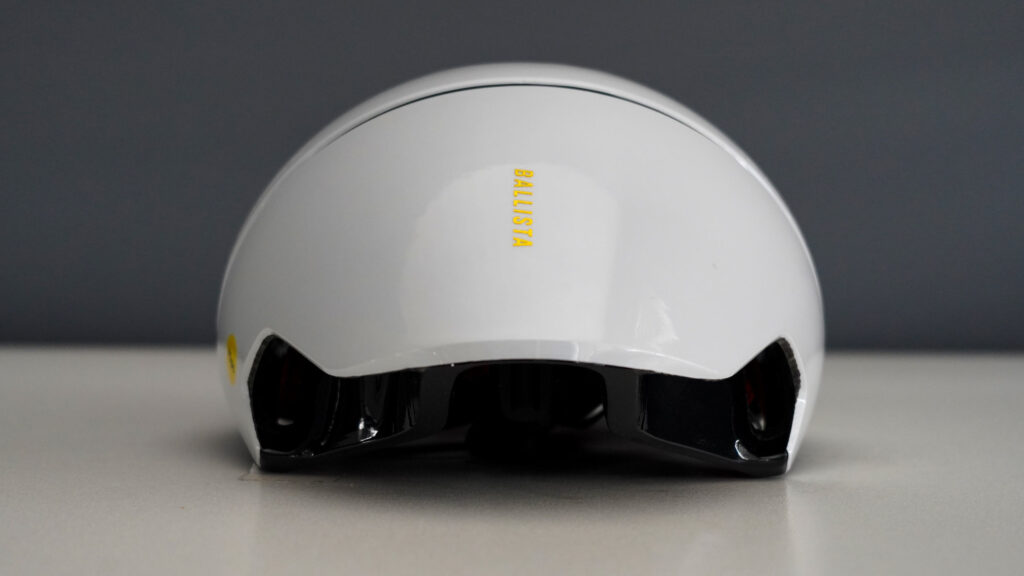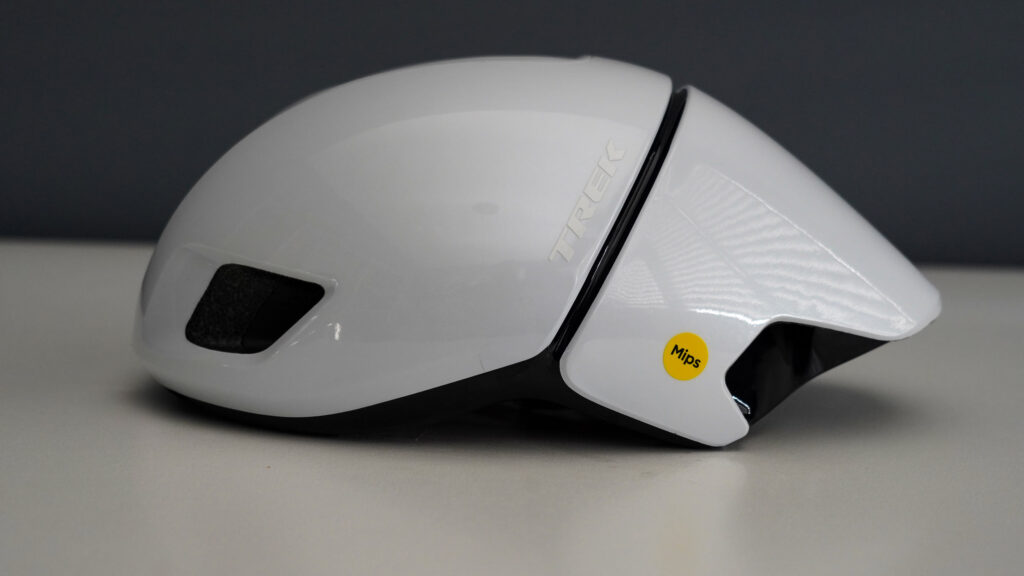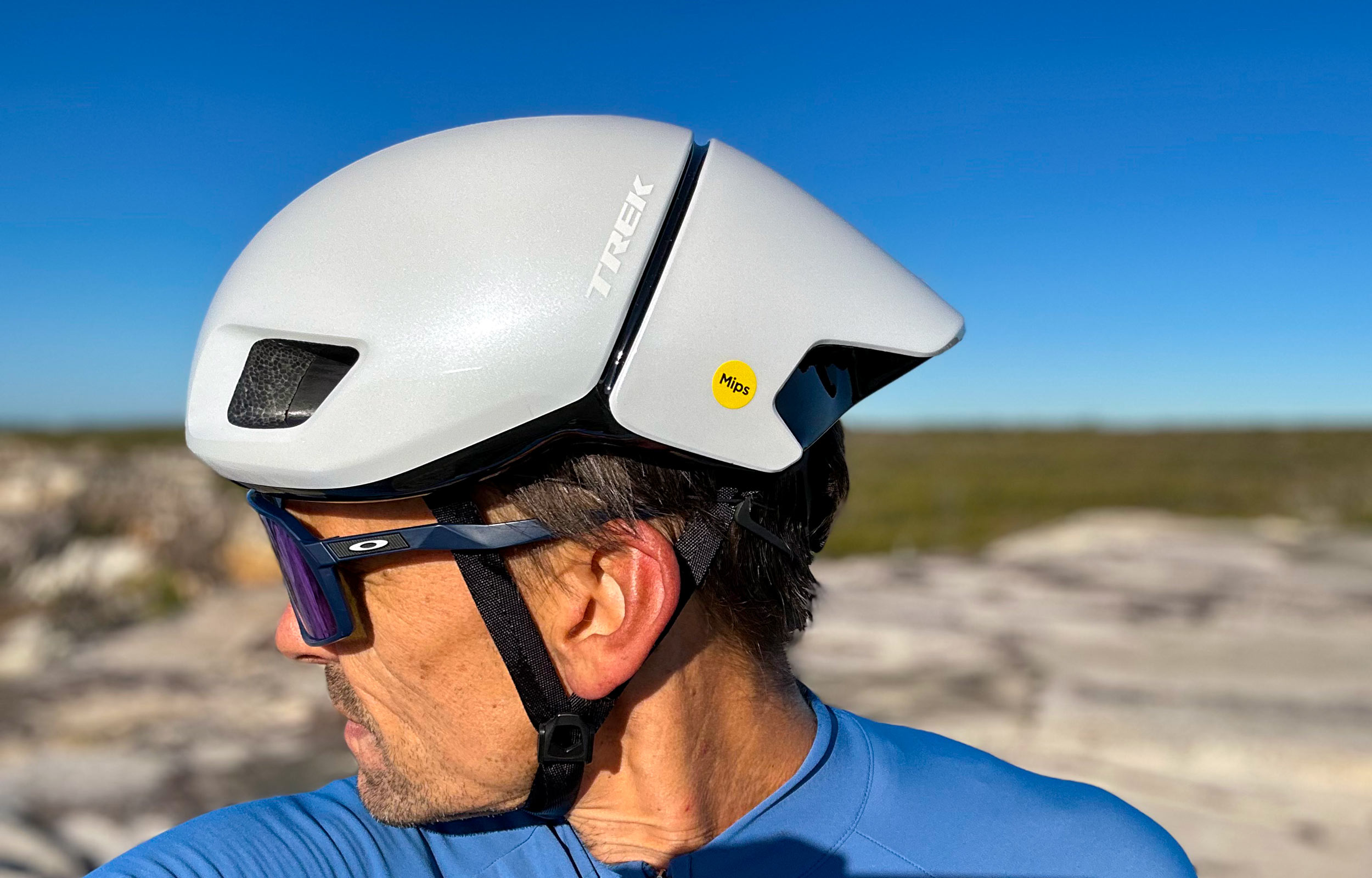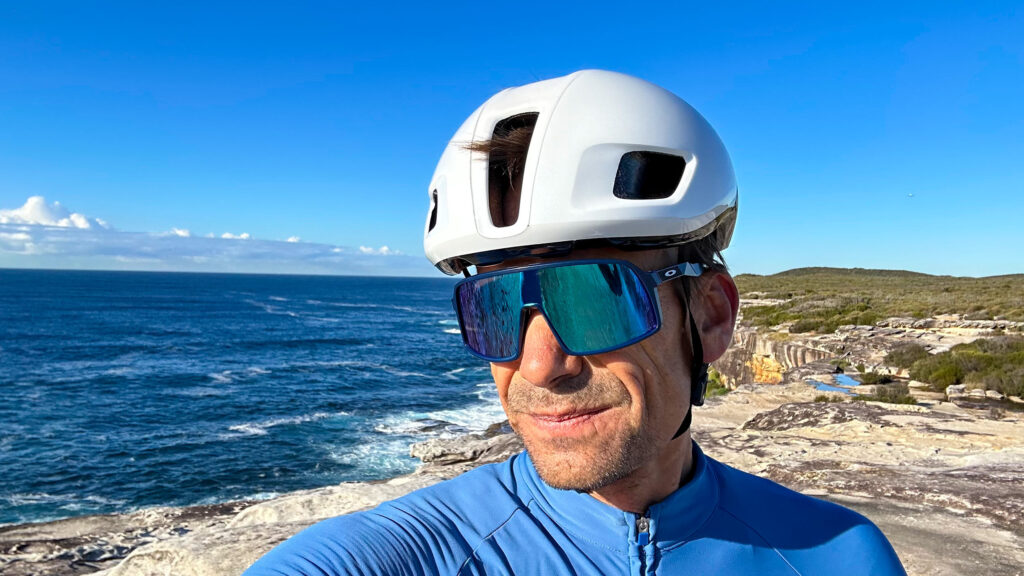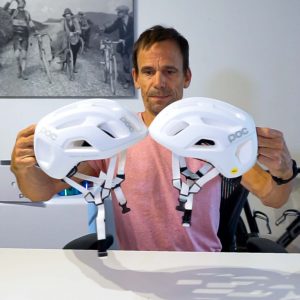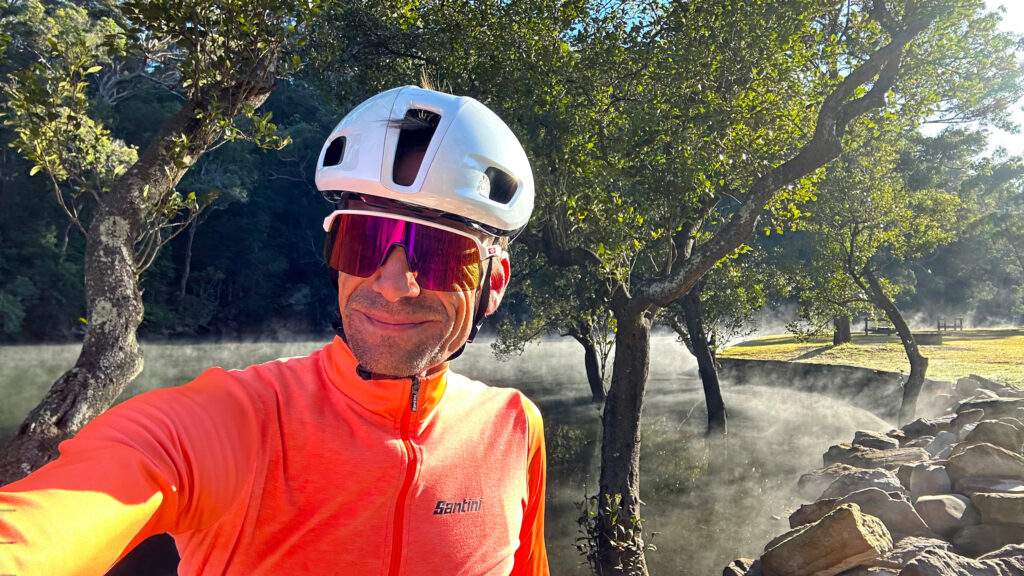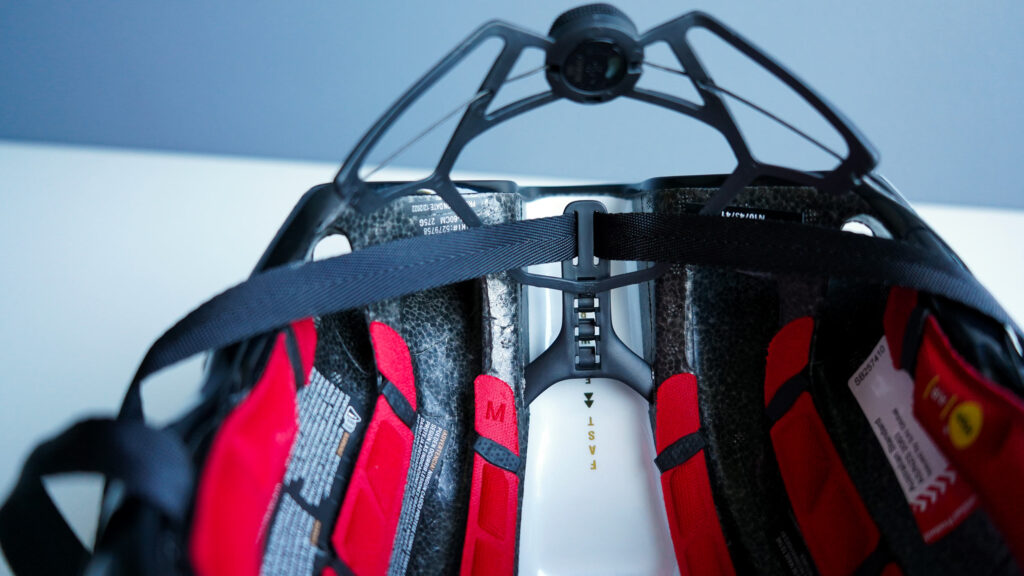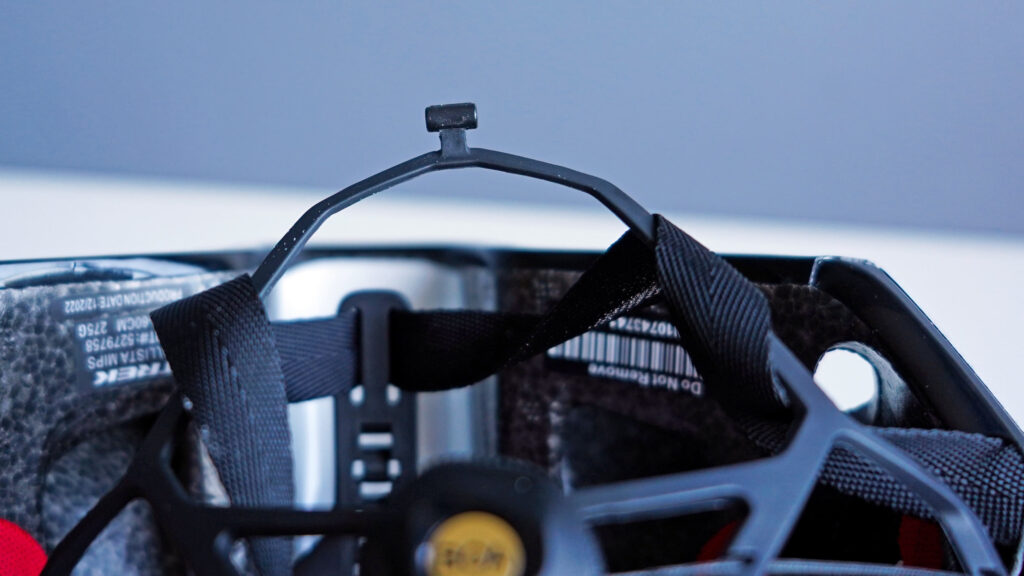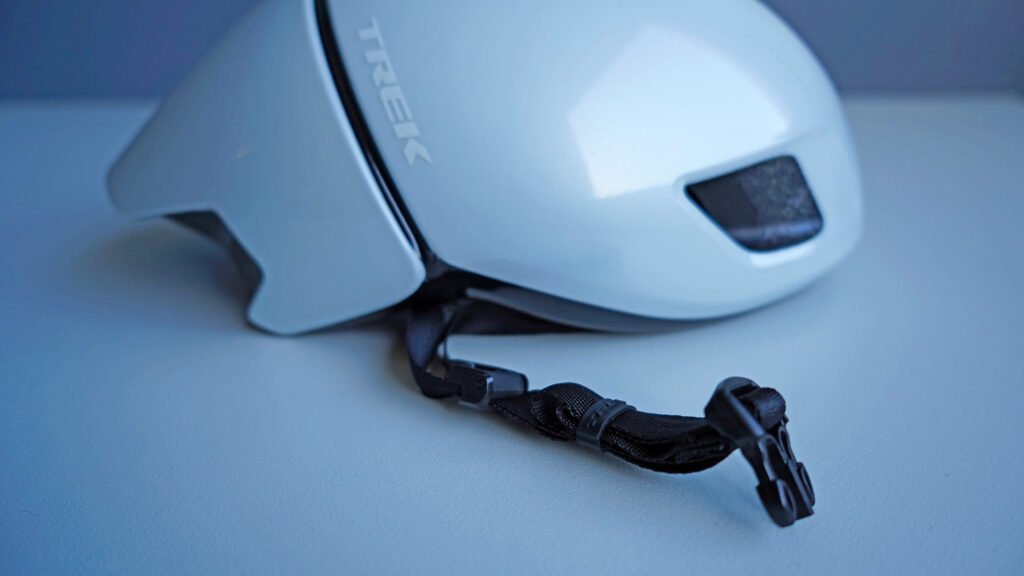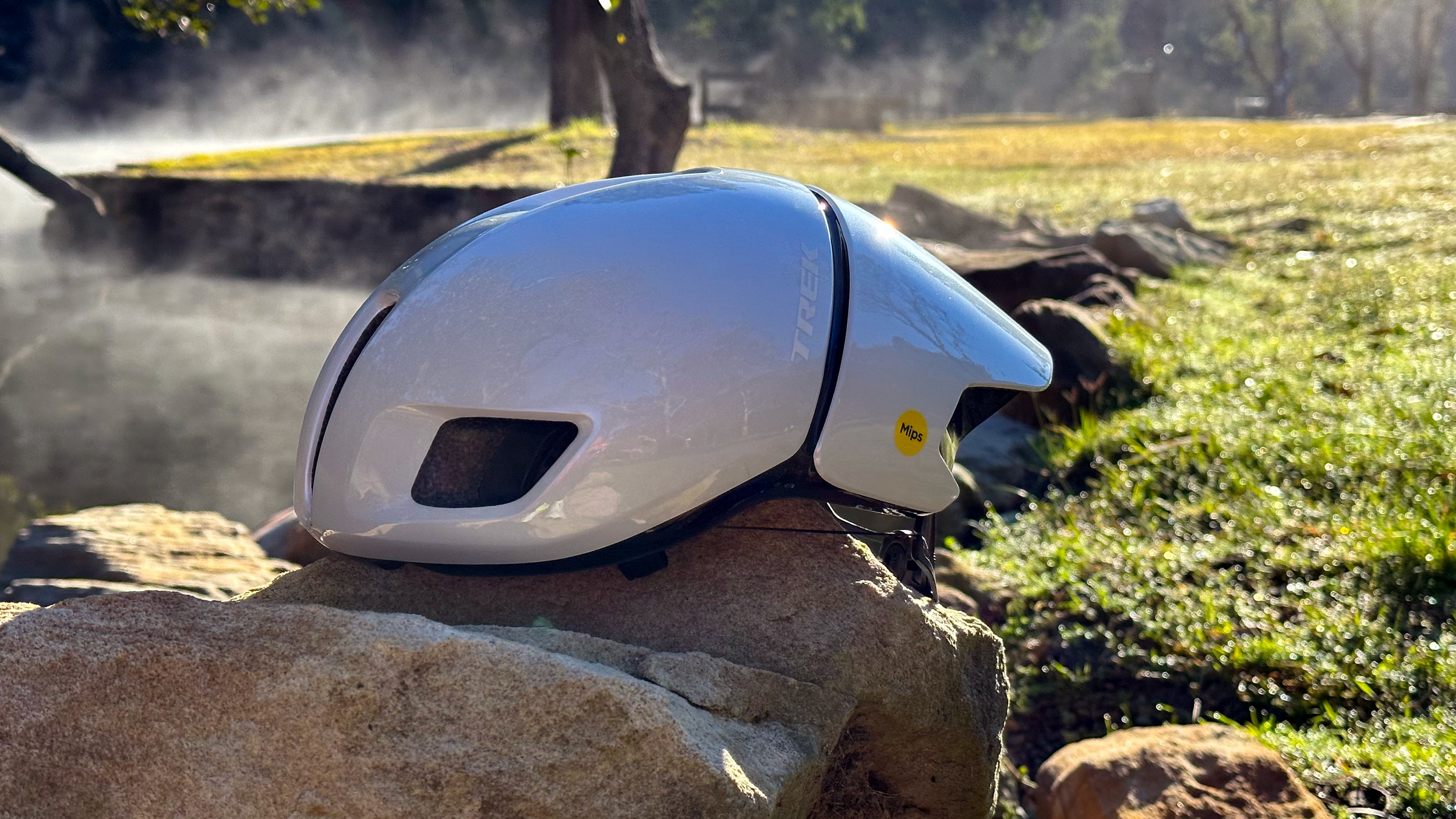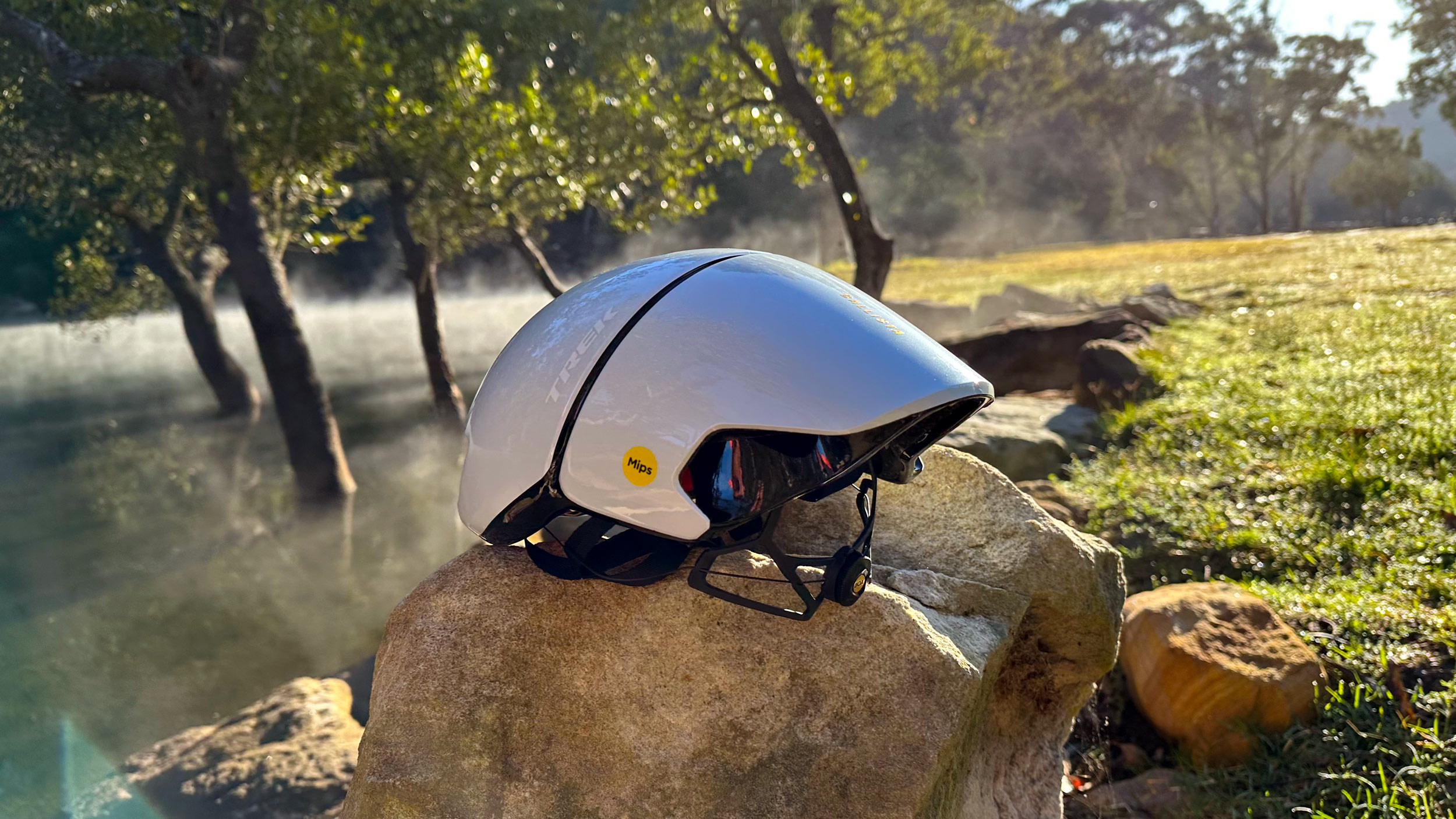The helmet brand previously known as Bontrager is now Trek. In April this year, two of the latest designs to come out of Wisconsin were launched – the aero Ballista and the well-ventilated Velocis… both are now available with Australian Standards approval.
By Rob Arnold
Trek’s new range of road helmets features MIPS, a safety system that is “specifically intended to provide additional protection in the event of such an accident”. Never mind all that fuss about Wavecell a few years ago, this concept is absent from the Ballista and Velocis of 2023.
Now lighter and with a strong presence in the pro peloton, what was once Bontrager is now Trek.
RIDE Media was sent a Ballista (in medium, 54-60cm) for review and it took only one ride for it to become one of my favourite helmets. Available in black, white, or black and white it has a RRP in Australia (in June 2023) of AUD$299 but is currently on sale via the Trek Australia site for AUD$259.00.
Weighing 241 grams and with a rear tensioning system that is height adjustable, it offers a surprising amount of ventilation and a neat, easy to use strapping system.
Comfortable straight out of the box, Trek retailers would benefit from having the straps adjusted a little better at the factory. This is an approach I think serves other helmet brands very well, as it means the gloss of a customer’s initial viewing isn’t blurred by having to fiddle with fastening buckles before trying it on for the first time.
Although they easily fall into place, the straps were loose and seemed cumbersome at first. It doesn’t take long to make the adjustments and once that’s done, this helmet is a big hit.
Light, aero, well-priced (even more so with the current sale) and safe, there are no odd protrusions that hurt my head and it certainly looks considerably smaller than the POC Ventral MIPS (medium, 290 grams) I’ve been riding with for the past year.
Happy with the look and feel of the Ballista, I set off for my first ride a few months ago and the best feature was yet to become apparent. Once rolling, however, it was clear there are advantages to the elongated design, complete with what effectively looks like a two-section hard-shell cover.
Let me put it simply: this helmet is fast!
It looks aero and frankly it also feels aero.
I’ll never know exactly how many watts I’m saving and that’s okay by me as these sorts of claims always make me feel a little uneasy. Still, the difference in sensation from one helmet to the next is noticeable.
Comparison with other helmets
I’ve filmed my reactions from the unboxing and my first ride and it’s interesting to note how my thoughts emerge the further I go. There’s a YouTube review in the works but for now I’ll jump straight to the point: I’m totally impressed by the Trek Ballista!
It surprises me that it’s lighter than the POC Ventral MIPS (and only a few grams heavier than the POC Ventral Lite (medium, 236 grams).
What also pleased me is that the Ballista looks a lot smaller on my head than every other helmet I’ve worn recently. This is a huge bonus when I consider some of the comments I get on reviews of helmets from other brands.
“Am a fan of the design language and use of white foams with POC,” writes someone after watching a video of my unboxing of the Ventral MIPS, “but can’t get over the mushroom shape, they just look terrible on all head shapes/sizes. If they can slim them down to modern proportions, I’m all in.”
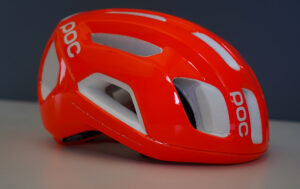
POC’s popular Ventral MIPS… in the super-bright AVIP colour way – ‘Attention Visibility Interaction Protection’.
It’s a matter of opinion, but this comment is a good example of what some riders are looking for: good “design language”, but also a little smaller… if possible. Please.
Personally, I like the look of POC helmets even if they do seem large on anyone’s head. That’s part of the deal, and the Swedish brand is almost striving to make the big shape a feature rather than trying to hide it.
Trek, however, has managed to squeeze the goodness of a safe, light helmet into a smaller bundle. It’s a win for many even before you get out of the bike shop.
There are more reviews to come about a selection of helmets from other brands, including a look at the range from EKOÏ which has become prominent in the peloton in recent years and is now beginning a push in the Australian market.
Getting into the specifics
- BOA rear tensioning system
- Strapping configuration
- Sunglasses housing
The rear tensioning system of the new Ballista deserves a mention. It’s easy to use and functional, but also requires a little extra attention at times. The height adjustment option is simple and effective but it is also prone to unclipping… easily. This is not ideal.
When it unclips the refitting is easy so it’s not a big deal but if you’re like me, you’ll get used to the process as it happens often.
There are three height settings: slot the plastic noddle into your preferred position and pull back until you hear it click. Once that’s done, the system works easily and it would be difficult (if not impossible) for it to come apart while on your head but be mindful when storing the helmet after a ride, or when fastening to your stem or handlebars during those coffee shop stops.
I’ve tried all three heights and each seems comfortable enough. Again, if you’re like me, the longer you ride the looser the tension setting becomes.
I find that my head tends to swell the longer I’m on the bike and towards the end of my rides, I’ll dial back the BOA fastening a click or two… maybe even three or four. But at no point on any ride with this helmet did anything seem as though it was out of place, interfering with blood flow, or just feel uncomfortable.
At the end of a four-hour ride last week, there was no obvious forehead indentation (as has happened with other helmets I’ve reviewed) and barely even any #HelmetHair.
This is already one of my go-to helmets. The early rides have been done with the original strapping but now that I know I’ll be using the Ballista more often, I’ll trim down the straps and really refine the (easy to use) adjustments so that everything is neat and tidy.
POC has clever little strap holders that keep overlapped sections tucked in together. KASK uses a larger leather-like under-chin strap that is practical and comfortable and slots into place very neatly.
The Trek Ballista features a little rubber loop that slips over the straps near the buckle on the right-hand side. Adjustments are easy when tightening or refining the fit, with clips under your ears that can be refined even while riding.
Sunglasses fit neatly and the helmet doesn’t interfere at all with a range of eyewear that I’ve tried while wearing the Ballista (including Oakley, POC, KASK and EKOÏ).
The sunglasses housing is functional: secure and easy to access while riding, you slot the arms into the side air vents and it’s not a fuss at all. I’d suggest you tip your sunnies upside down first as this steers the arms into a better position that doesn’t interfere with your head and positions them in a more secure manner.
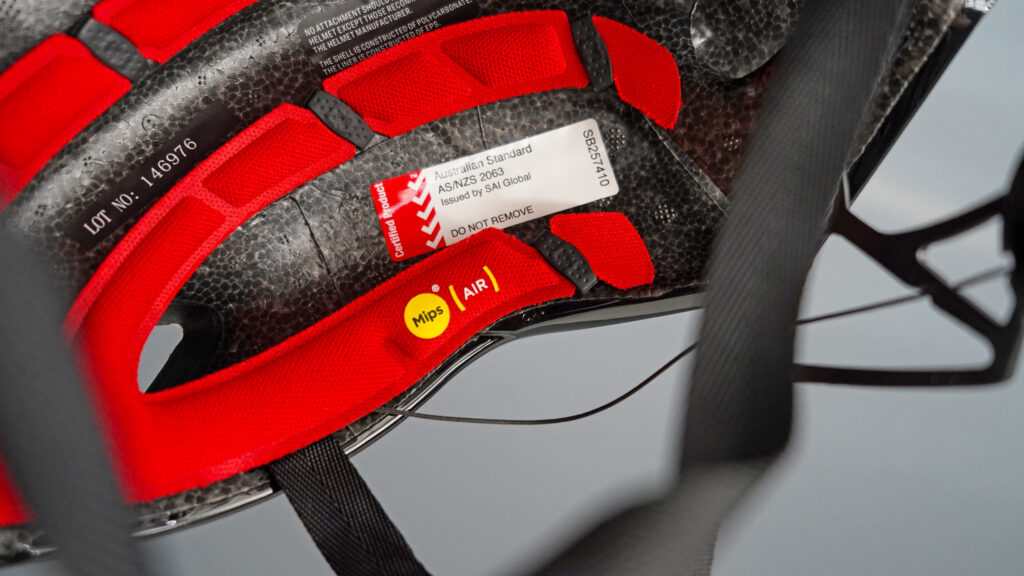
The Ballista has Australian Standards approval. Padding is easily removed for cleaning, with little velcro fastening patches on the underside of the little black rubber loops that wrap around the red cushioning…
Trek’s Ballista review helmet arrived in late-April and by then things were cooling down in Sydney so I can’t offer a comment on how it goes in the heat of summer. Still, it seems like there’s plenty of ventilation from the minimal openings.
Only a slight turn of the head does highlight how dramatic the airflow is, with there even being a change to the acoustics as the wind rushes past.
As you’ll see when the videos go live, the Ballista impresses me more than expected. There’s a lot to like about this helmet but the real selling point is the reality that it does feel a lot more aerodynamic.
– By Rob Arnold


